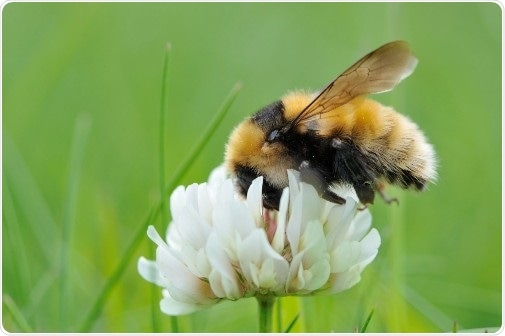According to studies from the University of York, UK conservationists and landowners support the increased usage of Gene Conservation Units (GCUs) to help conserve some of the world’s rarest insects and plants.

The Great Yellow Bumblebee. Image Credit: Lorne Gill/NatureScot
The Mountain Ringlet Butterfly and the Great Yellow Bumblebee, all of which are on the verge of extinction, will gain most from the Units, which are actually only used by forest trees.
These species’ genetic diversity is critical if they are to respond to new, and sometimes difficult, environmental conditions. Gene Conservation Units are areas of land maintained to allow recovery of biodiversity and to preserve evolutionary mechanisms that allow them to respond to environmental change.
For tree species, this means encouraging natural regeneration, while for others, it means guaranteeing that the breeding population is high and diverse enough to weather the coming changes. This can be accomplished by habitat conservation, as well as population control to ensure a large population is maintained.
High risk
In investigating whether landowners would be interested in adopting a system of GCUs, we looked at the potential benefits these might bring to some species of insects and plants. We have shown that the genetic diversity of cold-adapted butterflies, such as the Mountain Ringlet, is at high risk of local extinction in a warming climate and so conservation measures are needed to secure the survival of threatened populations.”
Melissa Minter, PhD Researcher, Department of Biology, University of York
“Similarly, the Great Yellow Bumblebee now only survives on a few Scottish islands and the northern tip of mainland Scotland, which means that any changes in our climate could negatively impact their already depleted population. We wanted to know if GCUs could provide a solution to some of these issues and whether this concept could be applied to other species, in addition to forest trees,” said Minter.
Best practice
A survey questionnaire was sent to land managers and conservationists to gather their thoughts on implementing a GCU system to conserve biodiversity. According to the survey findings, if GCUs can be co-developed with stakeholders, a GCU solution is more likely to cater to land managers.
Landowners will benefit from establishing GCUs on their property as an acknowledgment of best practices in conserving genetic and species diversity, as well as promoting evolutionary mechanisms that help species deal with environmental change. A working group has been formed to investigate how the first non-tree GCU could be created.
In honor of its ancient Caledonian pine forest, NatureScot’s Beinn Eighe National Nature Reserve (NNR) was designated as UK’s first GCU in 2019. Since then, the Woodland Trust has registered some more sites for six tree species around the UK, including three more in Scotland.
Exciting potential
We have seen first-hand how successful the Gene Conservation Unit approach can be with the registration of our Beinn Eighe NNR and this research shows the exciting potential for working with land managers to expand this work to cover many more plant, animals and wild species.”
Jeanette Hall, Study Co-Author and Officer, NatureScot Woodlands
“Conserving genetic diversity remains an international biodiversity priority so in what will be an important year for nature and tackling climate change, it’s great to see partnership working across the UK leading the way in this field,” added Hall.
Biodiversity targets
One of the international Aichi 2020 biodiversity goals centered on genetic diversity. This year, revised global goals for environmental improvement will be decided upon at a Conference of the Parties (COP15) in Kunming, China, preceded by the COP26 on climate change in Glasgow.
The research team is now considering developing two GCUs in Scotland and will track their progress in assisting at-risk species.
Source:
Journal reference:
Minter, M., et al. (2021) Exploring the potential for ‘Gene Conservation Units’ to conserve genetic diversity in wild populations. Ecological Solutions and Evidence. doi.org/10.1002/2688-8319.12061.